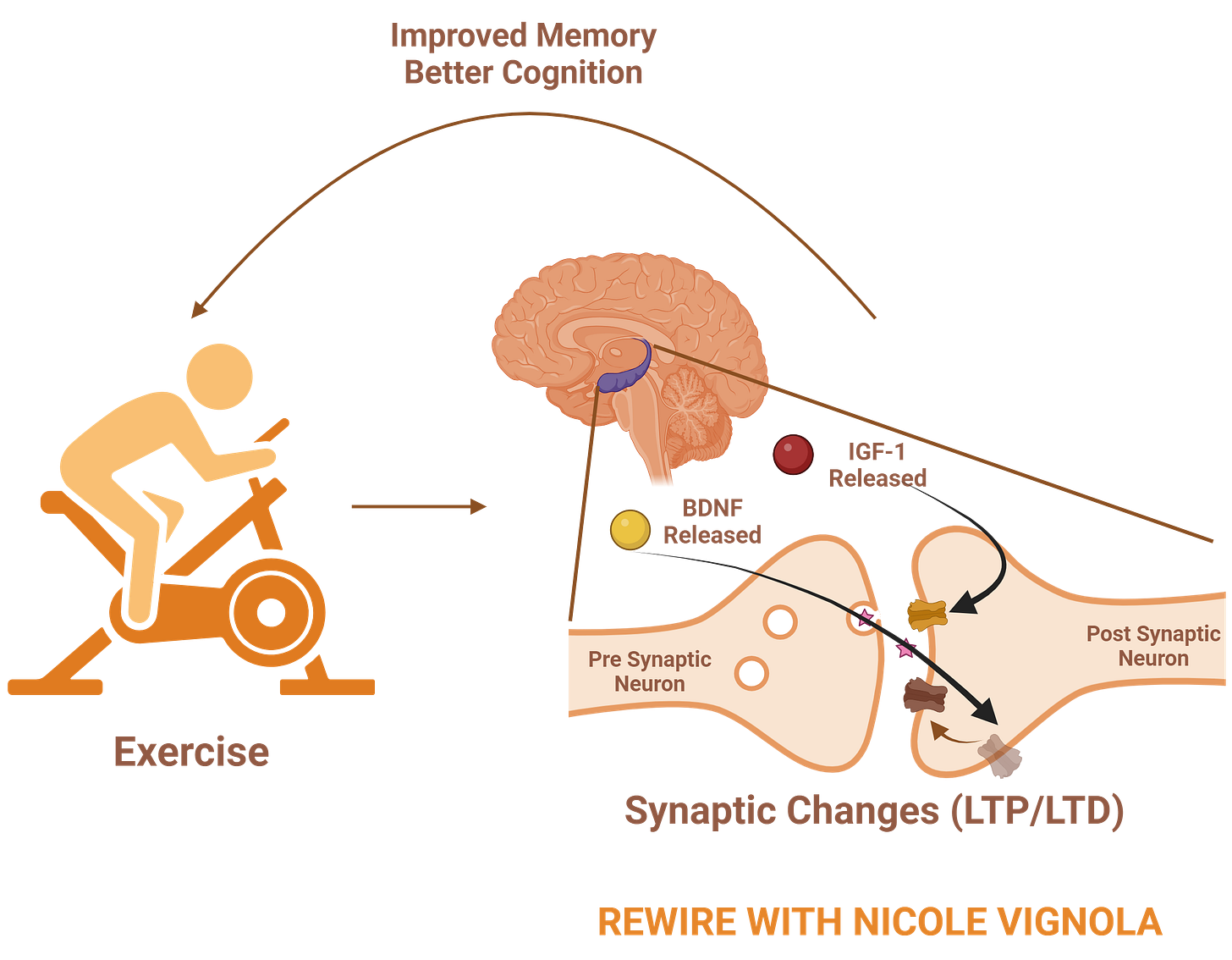Hey Brain Rewirers,
Welcome to this weeks newsletter! Let’s get into it: exercise can change your brain's synapses.
Exercise
What is exercise? We’ve previously chatted about how our muscles can communicate with our brain, and this has a pretty good overview of what I mean by exercise. I highly recommend having a read if you want to motivate yourself to exercise! But to catch you up, we can do weight training, which focuses on strengthening our muscles, zone 2 aerobic exercise, which is important for training your mitochondria (energy producers in your cells!), or even something as ‘simple’ as walking. We know that all levels of exercise intensity, done for a minimum of 10 minutes, either as a beginner or as a long-term worker-outer (is that a word?) improves memory, learning, brain health, and leads to release of proteins which communicate to your brain.
Exercise and Synaptic Plasticity
We know that both aerobic exercise and strength training lead to changes in neuronal and synaptic connections in the brain. We see this both in rodent studies1 and human studies2, and we see that particularly chronic exercise enhances long-term potentiation3.

But How?
It’s a good question. Exercise produces many proteins which can cause changes within the neuron and at the synapse. The two main proteins we see being released after exercise after IGF-1 and BNDF, which are important for brain health, neuronal growth, and plasticity. The combination of strength training and aerobic exercise leads to the greatest increase of BDNF and IGF-14. IGF-1 can cause changes in the receptors present at synapses which are important for long term depression5, and BDNF influences proteins within the neurons which are important for LTP6. In fact, blocking BDNF signalling also blocks the production of proteins which are necessary for synaptic plasticity to occur7.

Does it matter?
It actually does!
We see that not only does this improve memory in healthy populations8, but so it does in aging populations9 and people with Alzheimer's disease10. In fact, we see that in people with multiple sclerosis, exercise increased LTP expression and improved disability11!

So next time you thinking about exercising, remember all the positive health benefits it has, for our bodies and our brains alike!
Until Next Week,
Nicole x
P.S. Leave a comment with requests for future weeks letters!
References
Vilela, T. C., Muller, A. P., Damiani, A. P., Macan, T. P., da Silva, S., Canteiro, P. B., et al. (2017). Strength and aerobic exercises improve spatial memory in aging rats through stimulating distinct neuroplasticity mechanisms. Mol. Neurobiol. 54, 7928–7937. doi: 10.1007/s12035-016-0272-x
Marinus, N., Hansen, D., Feys, P., Meesen, R., Timmermans, A., and Spildooren, J. (2019). The impact of different types of exercise training on peripheral blood brain-derived neurotrophic factor concentrations in older adults: a meta-analysis. Sport. Med. 49, 1529–1546. doi: 10.1007/s40279-019-01148-z





I love this content! It’s scientifically based, still easy to understand. It gives theory, but also practical applications. I would love to know more about EMDR and how it helps the brain to rewire the stored trauma. Big hug for you Nicole! Keep showing up! You change more life’s then you know! 🙏🏻
Not a comment specifically, but just wanted to let you know that your newsletters are the only ones I actually open and read every word of each time. I like that they are simple clear and precise little articles about things I am actually interested in. Plus reference. Much joy, thank you 😄